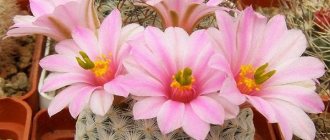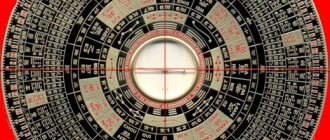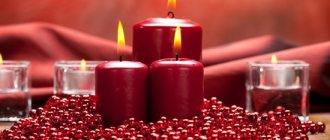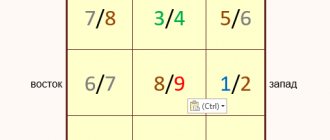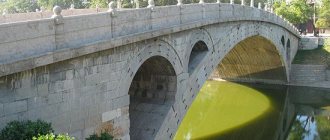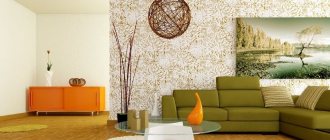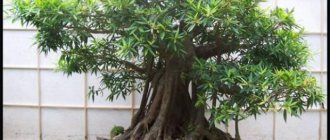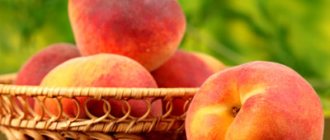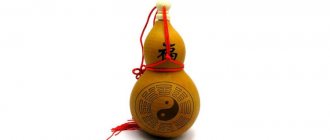Ficus will scare away a man
Ficus is contraindicated for single women to grow. Since ancient times, there have been many legends in the world about indoor plants - “husbands”. Such beliefs say that they repel men, creating an unbearable energy in the room. Ficus, fern and liana can prevent a free girl from finding family happiness. But ficus is one of the indoor plants that will survive any owner.
Plants at home
The most important rule you should know: plants can cleanse the energy of the home if they are initially placed and selected correctly. See for yourself, because on holidays it is customary to give flowers, and a house with small flower beds looks much cozier. Living plants bring life into the atmosphere of the house and this should be taken advantage of.
By the way, green is the color that can calm the nervous system and when you come home, you can quickly and easily recover just by admiring your house plants.
So, what flowers are advisable to place in a house or apartment?
Choose flowers that seem to stretch upward and have rounded leaves. This activates positive energies, while plants reaching down, on the contrary, will reduce the level of positive energy.
Cactus will provoke quarrels
A large number of cacti in the house can cause excessive aggressiveness. Needle plants, according to psychologists, are associated with negativity and can influence the emotional state of household members. Extroverts are especially susceptible to this. Cacti pose no threat to calm introverts.
I want to work every day to improve this world because we still don't have an alternative planet for us to survive on.
Maurizio Riva Owner of the Italian furniture factory Riva 1920
I am a man whose heart is “half made of wood.” On my farm in Cantú, I grow and care for young trees to compensate for the damage done to the world's forests by furniture makers. And now we give these trees to the factory’s clients.
Feng Shui garden
One of the most interesting and intriguing trends in landscape design is not just a style, but a philosophy, or, if you may, the science of harmonizing space, which has been transferred from home to garden. A Feng Shui garden, based on the knowledge of Chinese culture, not only pacifies, but also brings order to all aspects of life.
Excursion into history
In ancient China, even before our era, gardens were laid out in accordance with the laws of Feng Shui - harmonization of the environment and its ordering. The word "Feng Shui" consists of two components: "feng" - wind, and "shui" - water. Initially, only selected masters mastered the art of Feng Shui, and it was kept in the strictest confidence from ordinary residents. Currently, Feng Shui is widely used inside the home and is beginning to gain its place in landscape design.
Garden layout according to Feng Shui
Garden planning according to Feng Shui is carried out according to the Bagua scheme. According to it, the entire space is divided into nine equal parts, each of which is responsible for a certain aspect of life and has its own characteristics in color, placement of elements and symbols. The scheme is superimposed on the site, and in some schools the career area is combined with the entrance, others adhere to the combination of the career sector with the direction of the north.
So, the main way to organize space according to Feng Shui is to place certain functional zones in the corresponding sectors of the Bagua grid. In the career sector it is good to place running water - a stream, a cascade or a fountain, in the children's sector - a children's playground, as well as everything for creativity, fruit trees and a berry garden; A bench or gazebo is suitable for the partnership area. In the sector corresponding to good helpers, it is recommended to place souvenirs brought from travel, sculpture is desirable in the fame zone, wealth will be accompanied by lush flower beds, rose gardens, and also running clean water, and in the family zone - a patio and a swimming pool. The center is usually occupied by an open clearing.
Paths and areas of smooth outlines, with bends, straight paths, especially in the direction of the main entrance, are not allowed. Thus, the closest thing to Feng Shui is a garden in landscape style.
The surroundings of the territory play an important role - there should be no sharp turns of the road or sharp corners facing the garden and the house, and there should be no tall powerful trees opposite the entrance. Otherwise, it is necessary to mitigate the impact by planting hedges. In general, the garden should be quite secluded, but not with a blank concrete fence, but with row planting, hedges or climbing vines.
Plants come in a variety of colors and can be used to create open and closed spaces.
Feng Shui garden elements
Paths and areas are smooth in outline, without straight lines or sharp turns. Covering – natural stone, gravel.
Stone - corresponds to the element of earth; in the garden it can be used in rock gardens, paving paths, and decorative elements. Favorable in the partnership sector.
Water is an important element in the garden. It is believed that without water, harmony is impossible, so fountains and streams are welcome in the garden. Ideally, the water should not be too stormy or stagnant, and always clean.
Small architectural forms in the Feng Shui garden have not only a decorative purpose: each element carries a certain meaning. Each zone - family, wealth, knowledge, etc. - has its own patrons: dragon, turtle, phoenix, tiger, etc. Painted on the path, laid out with stones or in the form of figures, they not only add color to the garden, but also decorate his.
It is also important in which Bagua sector it is located - according to the teachings of Feng Shui, any of the five elements have both harmony and imbalance in different locations. Wood is responsible for the east and southeast, fire dominates the southern sector, earth is the dominant element in the southwest; metal is in the west, northwest, and water is in the northeast.
Coloristic features of a garden in Feng Shui style
A garden in the Feng Shui style is interesting because it has a lot of different colors and shades, because according to Chinese philosophy, each segment of the Bagua grid has its own color. For example, in the south, in the glory sector, it is a good idea to place bright red-orange flower beds, in the north-eastern and south-western sectors it is advisable to use yellow and red colors, in the west and north-west white and yellow predominate, in the north - white, blue and blue colors.
On the other hand, it is important to remember harmony: in a Feng Shui garden there are no poisonous, foreign color inclusions, and the overall tone is still calm ocher and green shades.
Selection of plants for the garden in Feng Shui style
The composition of tree and shrub vegetation in a garden in the Feng Shui style is varied: it is possible to use both deciduous and coniferous plants. It is worth filling the garden as much as possible with lush, beautifully flowering plants: lilacs, hydrangeas, cinquefoils, weigelas. When activating a particular zone of the garden, you can use plants with golden or purple leaves (Luteus and Aureus mock orange, Diablo, Nana purpurea weigela). Don’t forget about fruit plants - they are especially good in the family sector, and they will also be appropriate in the wealth sector.
But molded plants and bonsai should not be used - according to Feng Shui, the crowns should develop naturally. In addition, you should be careful with thorny plants - roses, barberries, hawthorns - use them only for “protection”, and not as the main assortment.
The flower beds in such a garden are also lush and bright. It is possible to use peonies, irises, zinnias, asters, oriental poppies, nivaria - mainly garden flowers.
Tips for creating a feng shui garden
- A garden in the Feng Shui style is symbolic and will work for the benefit even if instead of a pond there is a dry stream on the territory, and the patron animal is presented not in the form of a sculpture, but a drawing or mosaic on the path.
- Beware not only of keeping old and diseased plants on the site, but also of using driftwood, dry branches and stumps in decoration - this is not allowed in the garden according to Feng Shui
- The planning and planting of plants should obey not only the rules of Feng Shui, but also logic: for example, you should not plant plants on a hot afternoon, as some sources advise, and place the vegetable garden in a dark, but “necessary” sector according to Feng Shui.
Feng Shui is a way of organizing space that is more than one thousand years old. According to Feng Shui, a garden is not only beautiful and lush: it is able to harmonize energy, giving the owner longevity, prosperity, success in business and a strong family. Undoubtedly, design has a number of features and, perhaps, it will be difficult for a non-specialist to take into account all the subtleties, but with the help of professionals, a garden can become both a place of relaxation and a tool for improving the quality of life. One of the most interesting and intriguing areas in landscape design is not just style, but philosophy, or, if you may, the science of harmonizing space, which was transferred from the house to the garden. A Feng Shui garden, based on the knowledge of Chinese culture, not only pacifies, but also brings order to all aspects of life.
How to wear and care
Esotericists do not recommend this gem for constant wearing, except for light yellow and pink varieties. Ancestors considered an uncut stone on a simple cord to be the best amulet.
Frequent use damages the surface of the mineral, so the frame is made “blind”. Rings with hyacinth are worn by women and men; bracelets and necklaces look original.
Rules of care:
- the stone should not be exposed to direct sunlight for a long time;
- do not allow being in a humid environment;
- clean with a soft cloth without using chemicals;
- stored in a separate case or box.
A favorable time for purchase is the sixth lunar day of the month , a time of complete peace and security. When choosing a hyacinth, you need to hold it in your hands - a real gem remains cold and does not contain foreign inclusions or cracks.
Healing and magical properties
Hyacinth has powerful internal energy; it combines two principles - good and evil. Those who treat it frivolously will later regret it, but an attentive, responsible person will make friends with a capricious talisman.
Mystical abilities:
- the gem is considered the patron saint of trading people, merchants wore a ring with a scarlet stone for prestige - for an honest merchant it emitted a bright, pure light;
- has a positive effect on the performance of people with mental work, awakens interest in science and the desire to move forward;
- softens the influence of negative emotions, lifts the mood during periods of melancholy, drives away dark thoughts;
- protects travelers, helps them find shelter and generous patrons;
- the stone shares its power with people who have lost hope and do not believe in themselves;
- able to put out fire.
If a boy or girl cannot find a mate, then the symbol of sad love will only harm them. It is better to hide the crimson gem away for a while.
A happy person, surrounded by love and joy, needs to forget about jewelry with a bloody crystal. A power amulet can destroy the strongest well-being. Later, if problems arise, he will help and show his magical abilities.
The healing abilities of the mineral did not go unnoticed. During the Middle Ages, hyacinth powder was considered a salvation from all diseases.
Possibilities of natural medicine:
- the mineral eliminates inflammatory processes in the body;
- has a calming effect on neuroses;
- restores and improves vision;
- eliminates infectious diseases;
- regulates metabolism;
- stroking problem areas with a pebble relieves muscle pain.
Not suitable for women in an “interesting” position, it causes complications and termination of pregnancy. In India, there is an opinion that hyacinth is a strong contraceptive.
Varieties and colors
The color of the stone depends on the amount of impurities of copper, iron, and manganese in the composition; it varies from yellow to dark red. The most valuable are blue samples, which are extremely rare.
Usually the weight of crystals does not exceed 5 carats.
The record holder is a red-brown giant of 75.8 carats, found in Burma.
Classification:
- Red is the most common type. Transparent, bright, rich, similar to ruby and garnet. They are mined in Thailand, Germany, France, Sri Lanka, Madagascar.
- Red-brown - the original shade allows you to make exquisite exclusive jewelry. Found in Australia, in the Omsk region and Primorye.
- Yellow - a pebble from sand to deep golden color. It lies on the Kola Peninsula, Transbaikalia, Sri Lanka.
- Brown - found in Yakutia, Mozambique, USA. There is a legend that hyacinth took on the amber color of the lynx's eyes and absorbed the properties of this intelligent and strong animal.
Under the influence of high temperature, the stone loses its color and becomes like a diamond. Experienced craftsmen fire the blanks to obtain the desired color. When purchasing blue hyacinth, you need to be very careful not to purchase a processed crystal at the price of the original one. The last true blue gem was found many years ago in Thailand.
